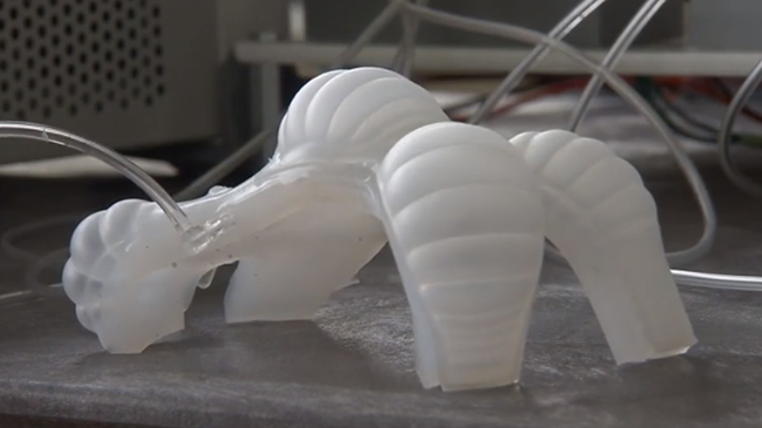SOFT ROBOTS
SOFT ROBOTS
The specific subfield of robotics that deals with building robots from highly compatible materials, similar to those found in living organisms, is called soft robotics, or soft robotics.
Characteristics of soft robots
Soft robot-systems possess high-level behavioral diversity, high level of bio-inspiration, can tolerate low accuracy, low speed, and force applications and is of low weight and cost.
What are soft robots used for?
These aren't words usually associated with robots. Nevertheless, soft robotics is a growing field in which engineers are building bendable machines with applications that range from laparoscopic surgery and prosthetics to disaster relief and space exploration.
Technology behind soft robotics
In order to achieve the movement, behavior, flexibility, and smoothness characteristics required in a soft robot, various sensors, actuators, and construction techniques have been developed using complex gels, polymers, and fluids.
Importance of soft robots
Soft robots have characteristics of flexibility, resistance, robustness and versatility that conventional robots do not possess. This makes them a valuable option when designing robotic systems where user safety and flexibility are of the utmost importance.
Bio inspiration
Bio inspiration has served to overcome mobility and navigation challenges that a conventional robot could never achieve. Bio-inspired soft robots, just like animals, have managed to cope with characteristics of hostile environments without difficulty.

This comment has been removed by the author.
ReplyDeleteThis comment has been removed by the author.
DeleteI think that the information is good for someone who studies the fields of robotics, it is an approach to this field and this specific type of robots, I would like them to add the parts that are mostly used in soft robots, such as flexible belts, the rigid segments, the muscular actuators, etc. I would still like to see the main soft robots such as snake robots, octopods and zoomorphs, the work fields of soft robots are more extensive, as is the case of zoomorphs, which is to be investigated and observe the behavior of wild animals, the materials of the soft robots are also too much and I liked that they added the most used, but I would add the characteristics of each one such as its rigidity, its elasticity or its difficulty to handle, in general It seems to me that it is good as an approach to this field of robotics, but it needs information to investigate more.
ReplyDeleteThe soft robots are robots that are soft or balndos that take the appearance of animals which promise to achieve things that conventional robots can not do is said that for the future they want to be like a jellyfish 90% water and the other part is the mass of the jellyfish one of the important things is said to be that it will replace the current robots because it can adapt to almost everything and the important thing is that their materials are economical another thing that promises is that it will be as similar to the animals as possible because the animals have the ease and elasticity to move and fulfill their certain activities in their daily lives. that its materials are economical another of the things that promises is that it will be the most similar to the animals since the animals have the facility and the elasticity to move and to fulfill their certain activities of their daily life for me the soft robots will revolutionize the industry since they have a soft touch and I think that they have as the most similar to the texture of the hand of a human being.
ReplyDeleteThe soft robot is a technology in the robotic area that is implemented in the inspiration of nature. Commonly, due to its flexibility, soft materials are required, but resistant and many sensors and actuators at the same time. Its main uses are foreseen for the rescue of people in natural disasters, to go inside the holes left by disasters and find civilians, without collapsing the structure; and also space exploration, in the part that robots cannot enter difficult terrain or terrain with little space and a lot of irregularity. Scientists and engineers see these robots with a great future in the coming years.
ReplyDelete